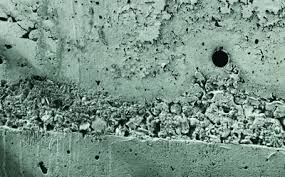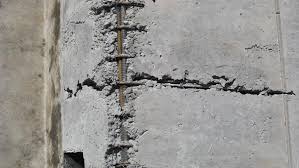Honeycombing or segregation in concrete
- Liaqat Hayat

- Jul 3, 2020
- 2 min read
The concrete mainly consists of cement, gravel/ crushed aggregate, sand, water, and sometimes also chemicals to increase workability. Honeycomb is due to non-reaching of concrete to all places due to which cavities and hollow pockets are created, the main reasons are:
1. Improper vibration during concreting.
2. Less cover to reinforcement bars
3. Use of very stiff concrete (this can be avoided by controlling water as per slump test).
4. Places like the junction of a beam, to beam, to a column, and to one or more beams, are the typical spots where honeycombs are observed. This is due to the jumbling of reinforcement of beams and column rods at one place; special attention is required at such place during concreting and vibration.
5. The presence of a higher percentage of bigger size aggregate in concrete also prevents concrete to fill narrow spaces between the reinforcement rods.
How to repair
Reinforced concrete structures have failed within 20 or 30 years of their construction due to honeycombs, which is less than half their projected life. Especially no risk should be taken in case of columns, machine foundations, rafts, beams, etc., where breaking and recasting is the only way out.
In case, honeycombs appear on surface the following sequence is to be followed
Remove all loose and non-dense concrete parts until you reach a dense layer of concrete.
Clean the steel reinforcement as well as you can
Apply the concrete surface with Styrene-Butadiene Rubber (SBR) available with all construction chemical vendors. SBR bonds the old and new concrete, without creating any hairline cracks, which usually cause water seepage.
It will not be out of context to point out that, contractors and their supervisors are in the habit of hiding honeycombs by applying a superficial layer of cement plaster on the honeycombs, hence site engineers must be very cautious.
At places of the junction of columns and beams concrete with strictly ¾” and down aggregates should be used with slightly more water and cement to avoid honeycombs.
Taping with a wooden hammer, the sides of shuttering from outside, during concreting, and vibrating will help to minimize honeycombs to a great extent in the case of columns and beams.
Use of thinner needle say 1” or less with vibrator at intricate places of concreting will also help in reducing honeycombs.
Honeycombs as a defect not only reduce the load-bearing capacity but water finds an easy way to reinforcement rods resulting in rusting and corrosion.






Usually these tanks don't have a tap at the bottom to remove last traces of water. if that be the case, its recommended to use wet vaccs.
How to clean overhead water-tank?
In common households, overhead water tanks are the only source of tap water. The tanks whether cemented or plastic are mostly placed on the roofs under the sunlight. Which raises the possibilities of growth of fungus and bacteria inside the tanks
https://www.reall.pk/